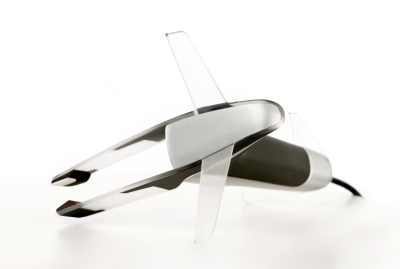Our scientific ecosystem brings together a broad variety of scientific expertise in the field of robotics, AI and further contributing sciences collaborating with key players such as first hand users, medical professionals and companies. We propose solutions to societal challenges such as the aging population, chronic diseases, traumas, personalized medicine, shortage of health care professionals, economization, and pandemics.
The research focus health evolves around scientific grand challenges such as digitalization & automation, Aware Operating Room (OR), surgical data science, multi-modal imaging, Advanced Visualization (AR/VR), assistive robotics, intelligent prosthetics, brain-computer interfaces, ethics in medical robotics and AI, and manipulation, teleoperation, and remote haptic interaction.
Spotlight on:
Medical Robotics
In the last decades robotics and mechatronics have found their way into many medical applications. Especially surgery has shown large potential for the use of robotic systems. The goal in medical robotics is thereby not to replace the surgeon by a robot, but to provide the surgeon with new treatment options to the benefit of the patient. Although this technology is still in its early stages, it will considerably change future surgery.
Since more than 15 years the Institute of Robotics and Mechatronics contributes to this process with various research activities. The successfully completed projects include among others the implementation of a robot-assisted endoscope guidance (1996–2008), the development of the ventricular assist device (VAD) DLR Heart (2002–2004), which was licensed by DUALIS MedTech GmbH, and the development of the versatile surgical robot DLR KineMedic (2002–2007) in cooperation with Brainlab AG.

Telemanipulation in Minimally Invasive Surgery
Minimally invasive surgery (MIS) challenges the surgeon’s skills due to his separation from the operation area which can be reached by long laparoscopic instruments only. To overcome the drawbacks of conventional MIS the DLR works on a research system for telerobotic endoscopic surgery.

In waterjet surgery a thin and high pressure waterjet is used to wash soft tissue away whereas structures with a higher mechanical resistance against the waterjet impact like nerves and vessels remain intact. By use of robotics the minimally invasive field of applications for waterjet surgery can be expanded.

In minimally invasive robotic surgery the surgeon usually operates in front of a console with input devices. The single steps of the intervention are realized by transferring the movement of the input devices to the robots.

Intraoperative Detection of Arteries Using Ultrasonic Sound
A problem of minimally invasive robotic surgery (MIRS) is the absence of haptic feedback from the operation site. In conventional surgery, however, palpation is commonly used to detect superficial arteries by a slight pulsation. The DLR develops a system based on a new, unidirectional ultrasonic probe, which enables the surgeon to palpate such arteries also in minimally invasive interventions.

The most important goals of the research activities in the field of Ergonomics / Human Factors are the definition of user requirements and the empirical evaluation of human-machine-interfaces (HMIs)

The MIRO Innovation Lab (MIL) is an open innovation lab in the field of medical robotics. Funded by the Helmholtz Association with the goal to support cooperative research in medical robotics, it enables close collaboration between the Institute of Robotics and Mechatronics of the German Aerospace Center (DLR), clinical partners, participating industrial partners, and other research institutions.